An Elevated Outlook
Experience life in Texas’ highest community at McDonald Observatory
The Harlan J. Smith Telescope
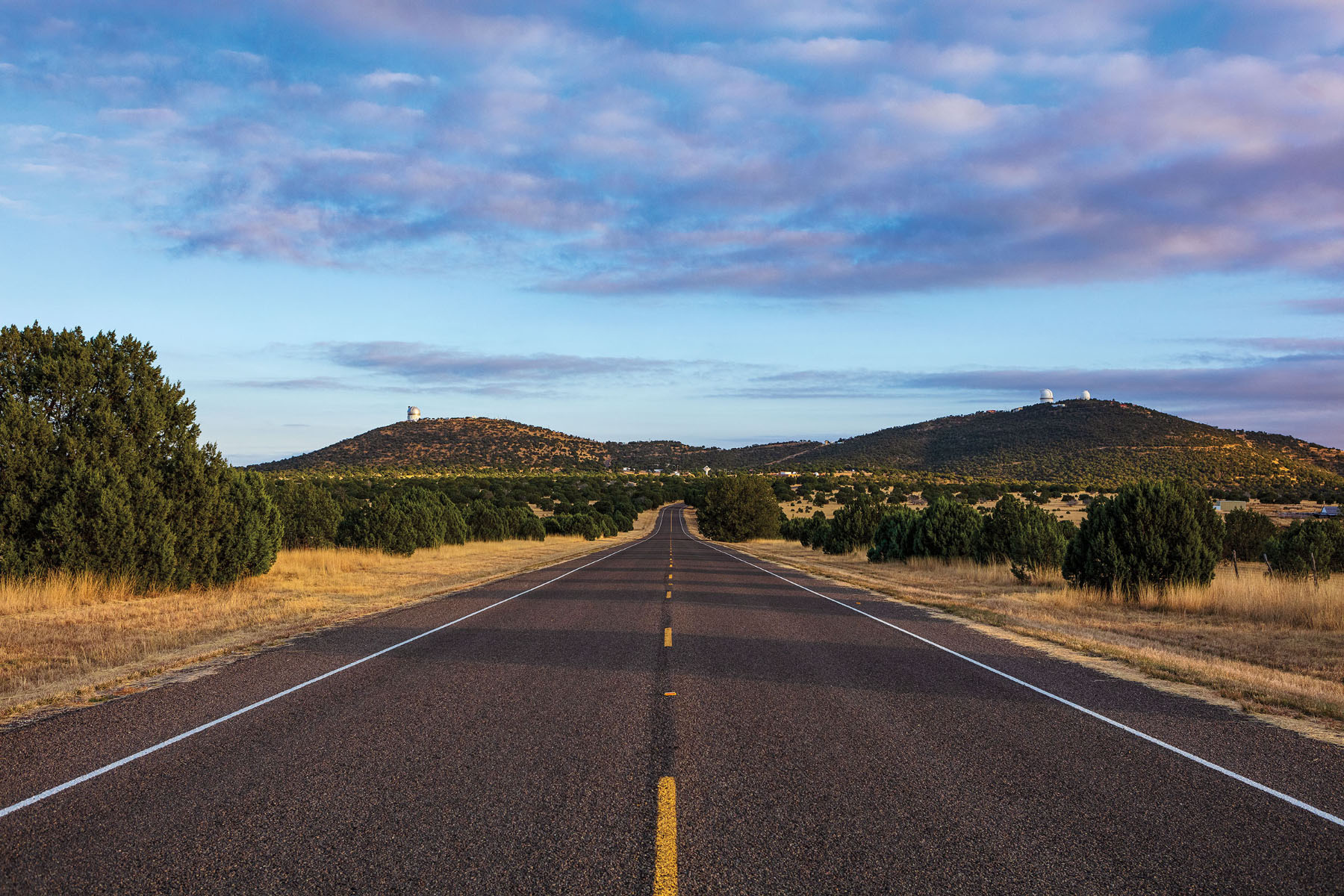
Awe is an elusive emotion,
but that pretty much sums up the feeling that welled inside me at Astronomers Lodge, the highest lodging in Texas. At the tippy top of Mount Locke in the Davis Mountains of far West Texas, the two-story building perched at 6,700 feet provides sleeping accommodations for astronomers, teachers, and students visiting the University of Texas at Austin’s McDonald Observatory, one of the world’s premier facilities for astronomical research. For two nights last fall, my wife, Kris, and I were among the guests of these rarified quarters.
As you might expect for an academic research station, the amenities at the 16-room lodge are basic. Our room was adequately equipped with a queen bed, a bathroom, and heavy-duty blackout blinds. Photos and paintings on the walls depict stars, planets, and other celestial bodies.
But we weren’t seeking high-thread-count sheets or luxury shampoo. We were there for the full-on McDonald Observatory experience. Along with participating in a Special Viewing Nights program—a guided viewing of the night sky using high-powered telescopes—we experienced the behind-the-scenes look that comes with an overnight stay. Our itinerary also included daytime tours of the big telescopes and one of the observatory’s popular Star Party programs.
Once the exclusive domain of astronomers, caretakers, and university officials, Astronomers Lodge now welcomes a limited number of regular outer space cadets like me who are visiting the observatory for special events. If rooms are available, participants in the Special Viewing Nights and Star Party programs can also book a night at the lodge.
After the sun went down, Kris and I got our bearings. We learned to move around in the dimly lit lodge, guided by soft red lights in the hallway. Window blinds in the rooms and the dining hall remain tightly closed after dark to eliminate leaking artificial light that could interfere with the astronomers’ work.
Our visit coincided with a full moon, meaning it wasn’t the best conditions for stargazing. But I set my alarm for 2:30 a.m. anyway to see a near total lunar eclipse. Feeling my way down the hall and outside, I viewed the full moon overhead as the earth’s shadow covered it, allowing the stars to briefly illuminate the sky, as they do so well out here.
The next morning, dawn delivered a surprise payoff. As I peeked out of our room’s window, first light revealed a mountain landscape of pale shades of brown set against a brightening cloudless backdrop. The blinds in the dining room were opened for breakfast, revealing even more glorious terrain. Rays of golden light illuminated distant peaks and the metallic dome of the Hobby-Eberly Telescope on Mount Fowlkes to the north.
As far as my eyes could see, serenity ruled. Other than the observatory grounds, the stock tank on a neighboring ranch, and a scattering of residences far away in Limpia Crossing, the sweeping vista was devoid of humanity. Even when it’s cloudy and lousy for stargazing, the view from the lodge remains sublime, says Stephen Hummel, the observatory’s dark skies specialist, who works with regional communities to reduce light pollution. Hummel has built an Instagram following of thousands for his celestial photography in the Davis Mountains. “In fall and winter, we’ll be above the clouds here,” he says. “The sky above, the clouds below.”
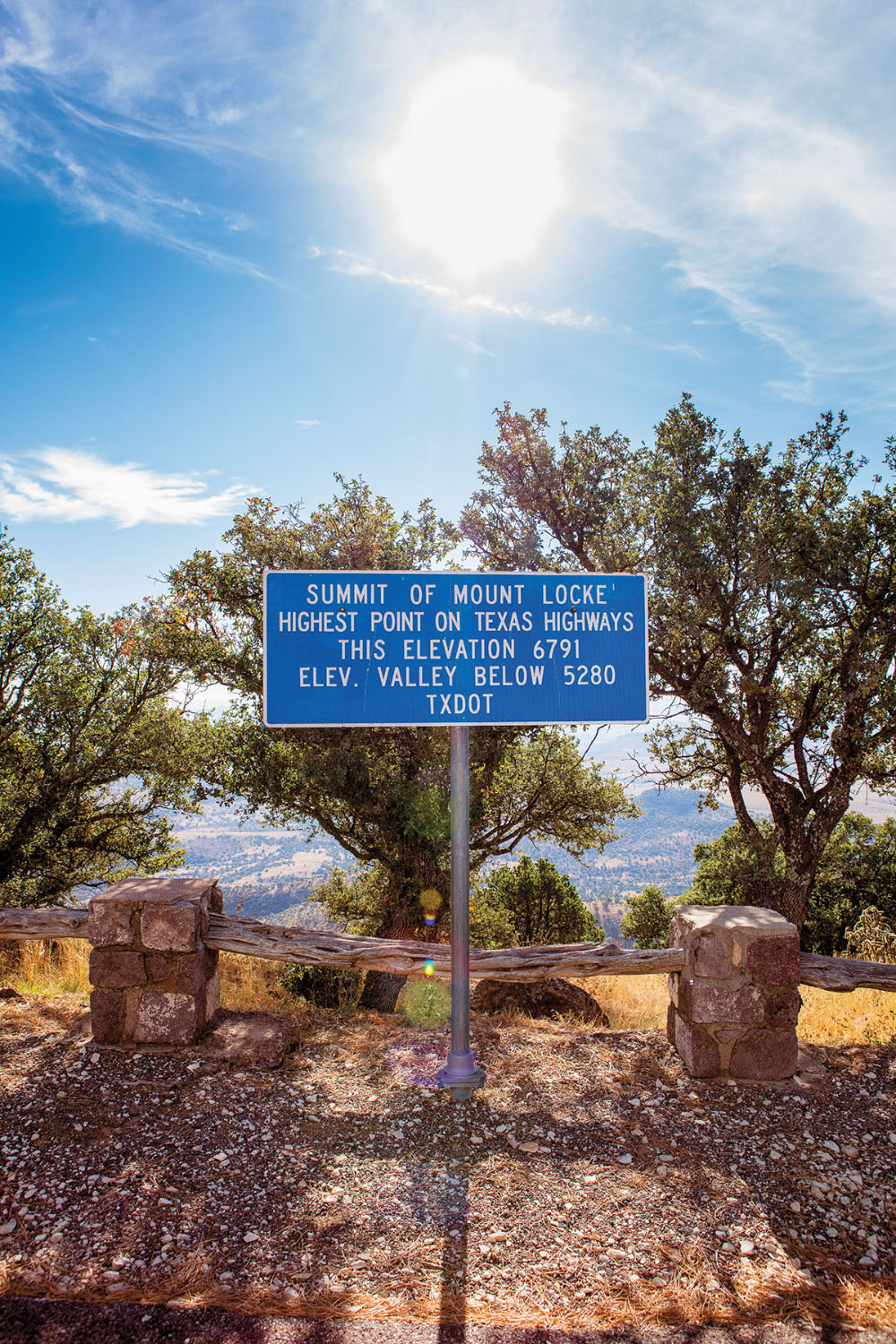
High Times
McDonald Observatory offers a range of visitor experiences, from exhibits at the visitors center to telescope viewings for small groups. Star Parties (see below) cost $25. Special Viewing Nights, which last three hours and are limited to 15 guests, cost $150 to use the 82-inch telescope and $100 for the 36-inch telescope. When rooms are available, event participants can book a room at Astronomers Lodge. The rate is $141.25 per night for one person or $214.70 for two, taxes and meals included. One suite is available for families with children under 10 for $288.15 per night. For more information on Astronomers Lodge, call 432-426-4139. McDonald Observatory will hold its inaugural Dark Skies Festival on April 29-30 with activities including facility tours, telescope viewings, live music, and guest speakers.
mcdonaldobservatory.org
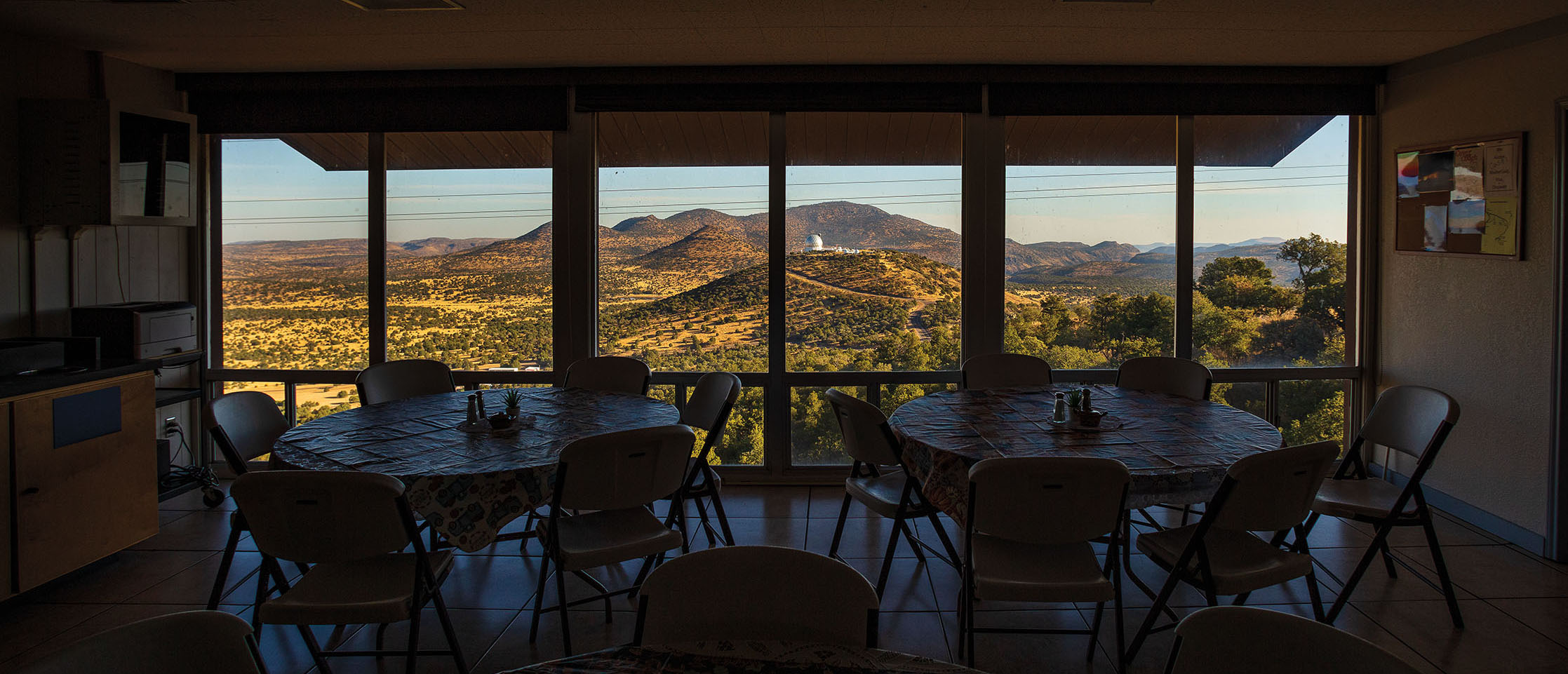
The McDonald Observatory traces its origins to an unlikely benefactor. William McDonald, a bachelor banker from the northeast Texas town of Paris, bequeathed his estate to the University of Texas in 1926 for the purpose of building an observatory. Never mind the university didn’t have an astronomy department at the time.
McDonald did not study the sciences, and he was not affiliated with the University of Texas, says Katie Kizziar, the observatory’s assistant director for education and outreach. “But he left the bulk of his estate specifically for the formation of an astronomical observatory in Texas.”
McDonald donated enough money to build a telescope but not to buy the land. After determining the ideal site—the Davis Mountains were already renowned for dark skies—UT officials wrote a letter to the McIvor family, who owned one of the largest ranches in the Davis Mountains. In 1933, the McIvors agreed to donate what is now Mount Locke for the construction of the first telescope. The estate of Fort Davis Judge Edwin H. Fowlkes followed up with the donation of the adjacent mountain, later home to another scope.
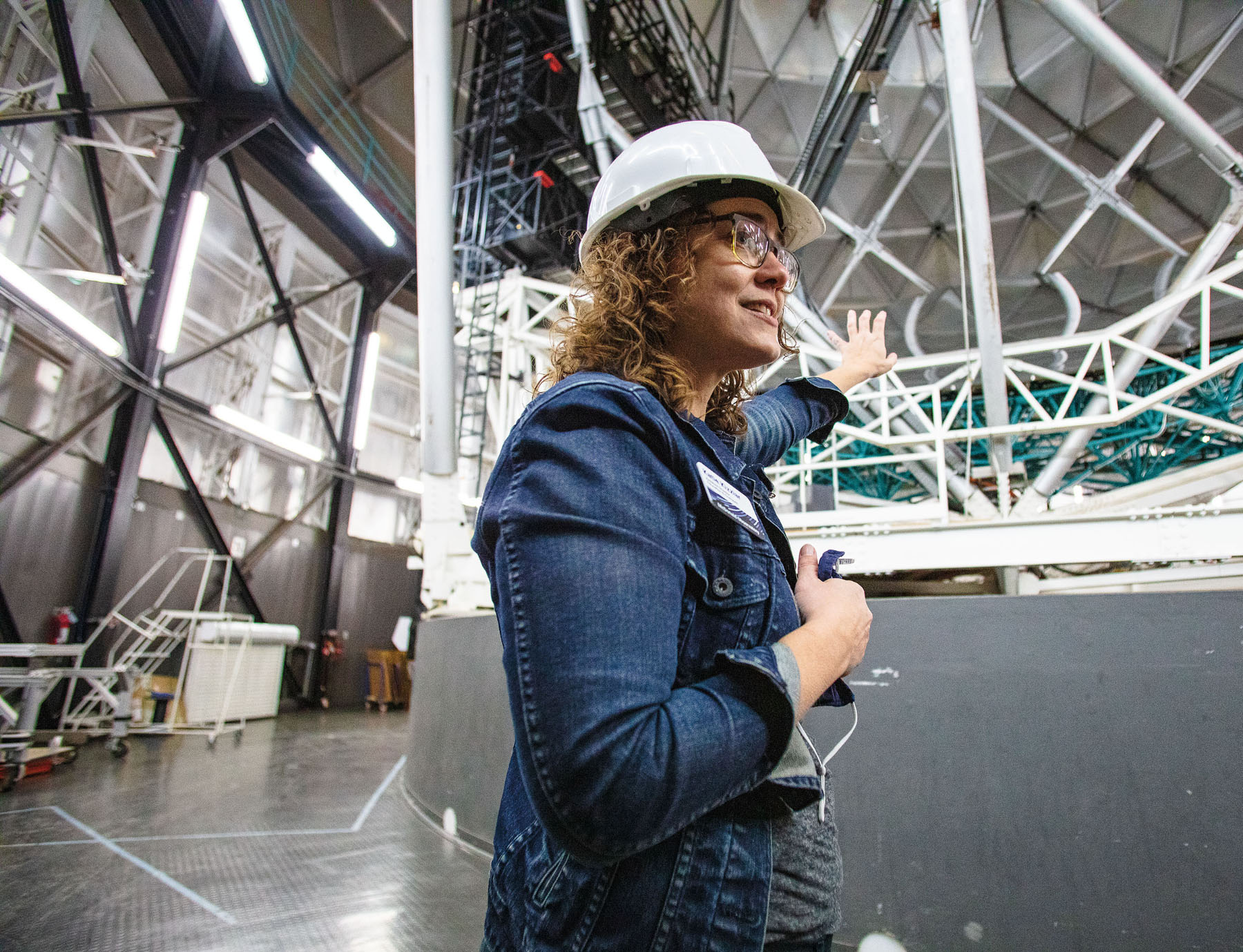
Per McDonald’s wishes, the new facility was for “the study and the promotion of the study of astronomical science.” McDonald Observatory takes the “promotion” part of the mission to heart. It employs a full-time educational staff to welcome the public, holds teacher workshops in the summer, and serves as an example to other observatories for how to do outreach and education.
During my visit, Kizziar led Kris and me on a personalized tour, starting in the white dome housing the 82-inch telescope, named the Otto Struve in honor of the observatory’s first director. The telescope—informally known as “The Grand Old Lady”—was the second largest in the world when it was completed in 1939. Its dome structure at the time was a self-contained facility with sleeping quarters, kitchen, library, photo darkroom, and offices. Using the Struve, astronomers have made significant discoveries, including the detection of carbon dioxide in Mars’ atmosphere and the existence of a fifth moon around Uranus.
The Harlan J. Smith telescope came online in 1968, and at 107 inches was then the third largest scope in the world. It’s named for the observatory’s director from 1963-1989. Smith oversaw the growth spurt that included this second research telescope, the addition of a visitors center, and construction of the first on-site residences and Astronomers Lodge. “That was when the astronomy department really kicked off,” Kizziar says. Just this past December, a team led by recent UT Austin doctoral graduate María José Bustamante used the Smith telescope to discover an unusually massive black hole in the center of one of the Milky Way’s satellite galaxies.
Next, we drove down Mount Locke and about a mile across a saddle to Mount Fowlkes, site of the Hobby-Eberly Telescope, dedicated in 1997. At 400 inches, it’s one of the biggest optical telescopes in the world. A joint venture of several universities around the world including UT and Texas A&M University, the Hobby-Eberly is known for its study of dark energy, looking back in time for clues about the universe’s quickening expansion rate. We donned hard hats to do a walkaround inside the Hobby-Eberly’s geodesic dome. Unlike the big telescopes on Mount Locke, which look like what one would typically think of as a telescope with a large tube and an eyepiece to view the sky, the Hobby-Eberly is basically a giant curved array of 91 mirrors that gather and interpret light.
“All of the telescopes collect information by a spectrograph, which separates incoming light by wavelength or frequency and records the resulting spectrum,” Kizziar explains. For the largest projects, massive amounts of data are piped to a supercomputer at UT Austin.
In 2017, after a $40 million upgrade, the Hobby-Eberly Telescope began the Dark Energy Experiment, Kizziar says, “examining 1 million galaxies to probe the universe of dark energy, which is causing the universe to expand faster as it ages.”
We stop to look at the mirror room, where technicians clean the scope’s 91 mirrors. “Mirror techs have to have fine motor skills,” Kizziar says, pointing out that one former tech has a fine arts degree.
The Hobby-Eberly is likely to be the last giant telescope built in the Davis Mountains. A consortium including UT and A&M is building the Giant Magellan Telescope in Chile, a location chosen for its high altitude, dry climate, and isolation from light pollution, When finished in 2029, it will be the world’s largest ground-based telescope, more than three times the size of the Hobby-Eberly.
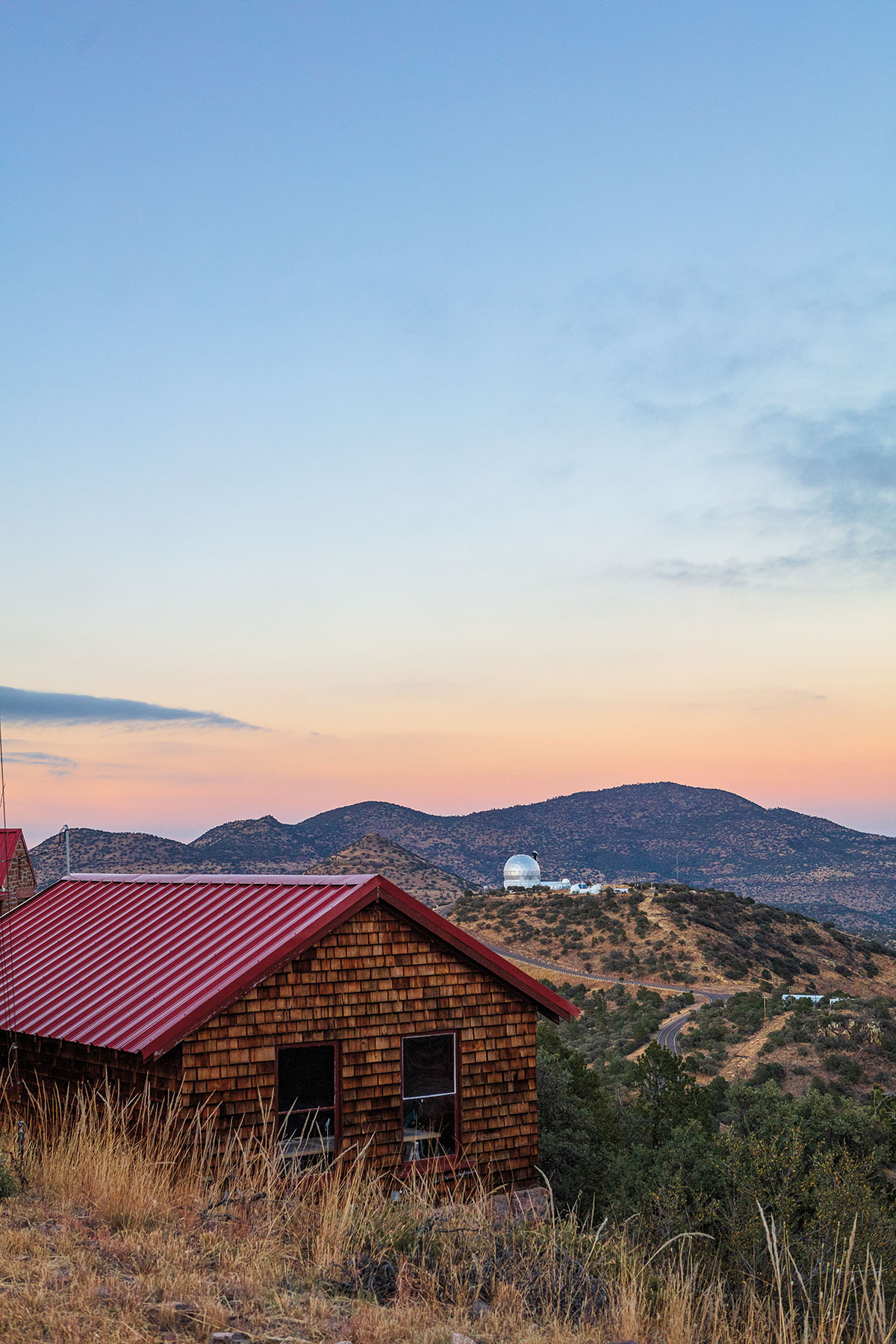
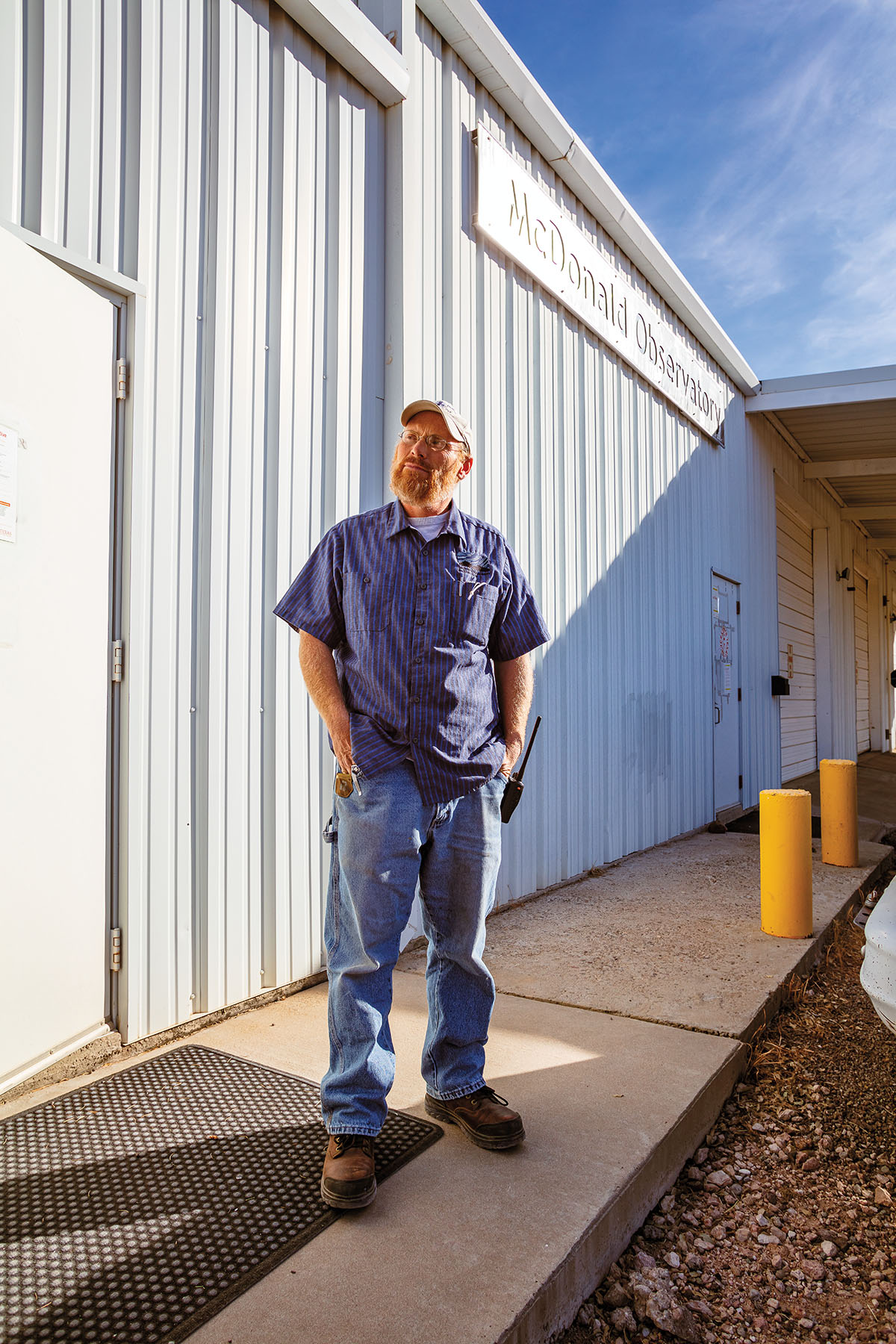
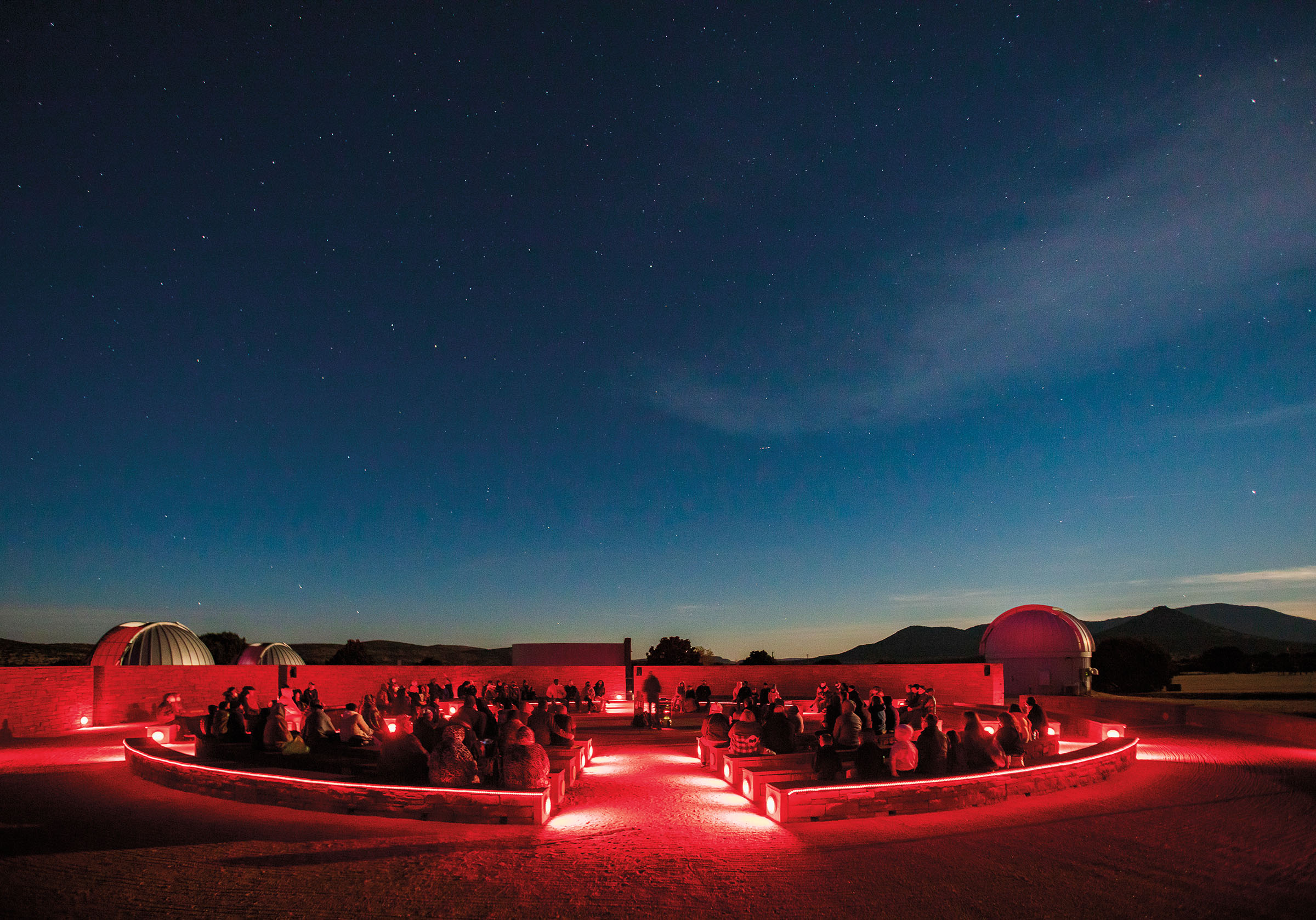
With numerous telescopes, the 12,000-square-foot Frank N. Bash Visitors Center, and various support buildings, McDonald Observatory functions like its own little town. Sixty-four people currently live on-site, comprising the highest community in Texas. Locals call their home “the Mountain.” When someone drives 16 miles down to Fort Davis—the closest place for gas, groceries, schools, churches, and other essentials—they’re “off-Mountain.”
“We are the largest permanent employer in Jeff Davis County with about 80 employees eligible for jury duty,” notes Dr. Teznie Pugh, superintendent of McDonald Observatory.
Pugh functions like a combination mayor-city manager with the added responsibility of science operations. Along with technical oversight of many of the research telescopes, Pugh manages the observatory facilities and maintains relations with local governments and businesses.
“In a single week, I could be helping to run a sewer snake, collecting science data using a world-class research facility, writing our latest job posting, presenting at a local government meeting, submitting a requirements document for our latest upgrade project, and reviewing bids on a housing renovation project,” she says. “Also, I get to go home to some of the best views in Texas.”
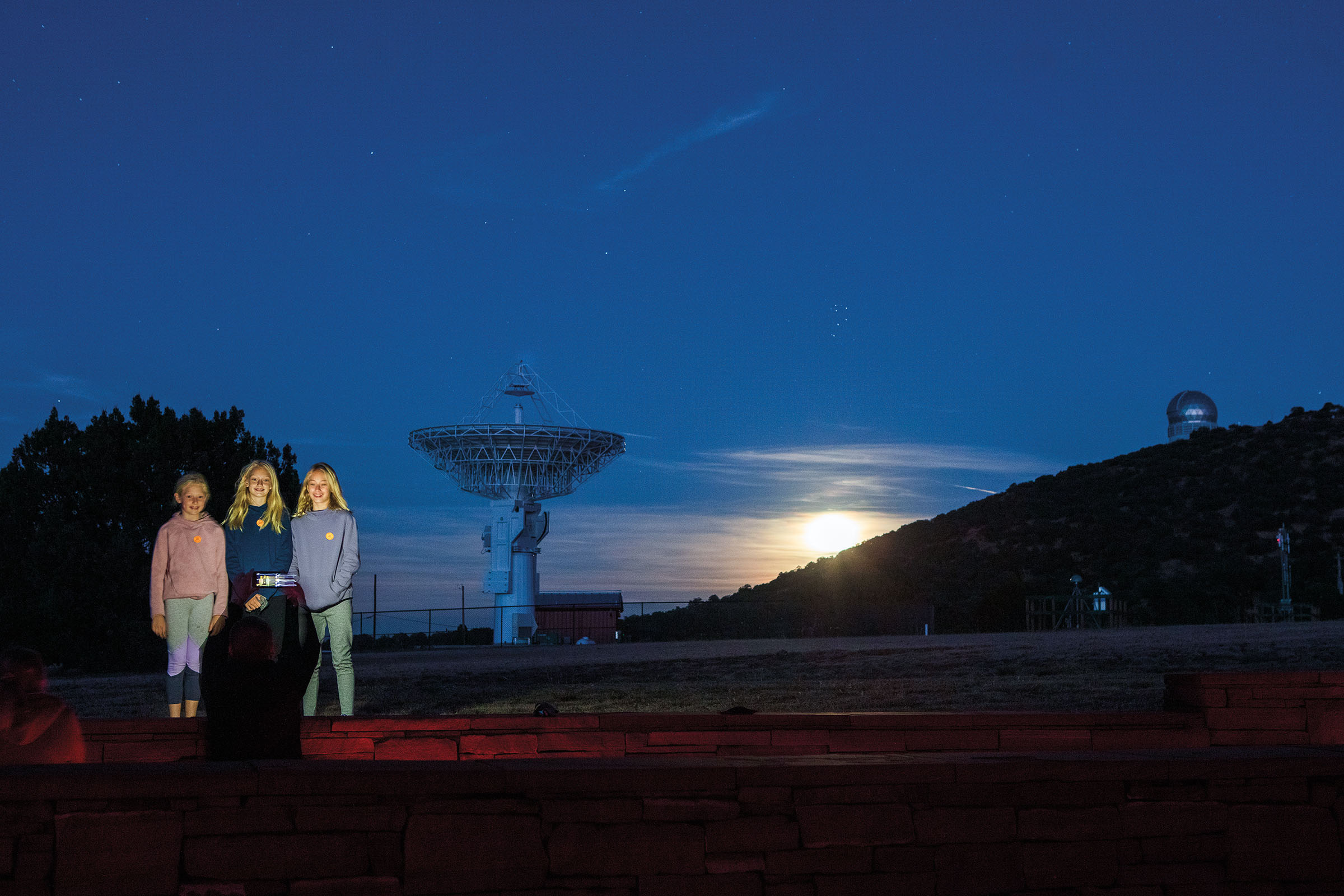
Jimmy Crooks, the resident “Mr. Fix-It,” found his first job on the Mountain working on a home remodel. He ended up staying and marrying Kizziar. They are one of several couples who met at McDonald.
Crooks is on call for HVAC repairs, hydraulic maintenance, and repairs to the electrical, water, and sewage systems. In exchange, he gets to live in the highest community in Texas.
“You never know what’s going to go wrong,” says Crooks as he fills out forms at the physical plant, which houses
two firetrucks and an array of heavy equipment and machinery. “I have to be prepared to do everything. But living here means never waiting in line and never waiting at a stop light.”
Back at Astronomers Lodge, Karen Sulewski, the lodge manager, shows us around the kitchen and dining hall. Guests may make their own breakfast and coffee, while Sulewski and team serve lunch at noon and dinner at 5:30.
The lodge’s clientele is egalitarian. One week, it’s university students. The next week, it’s the board of directors of the Hobby-Eberly Telescope, convening from around the world. Whomever is visiting, the emphasis is on functionality, exemplified by the folding chairs and plastic table covers in the dining room. No one’s complaining, though. It’s a privilege being at McDonald Observatory. Just about everyone who has spent a night here knows location, location, and location is what makes this place special.
It’s not for everybody. But for those who get it, the pull is irresistible. “Whenever I feel too alone,” Hummel says, “I go outside and look up at the sky and say, ‘Yeah, it’s worth it.’”
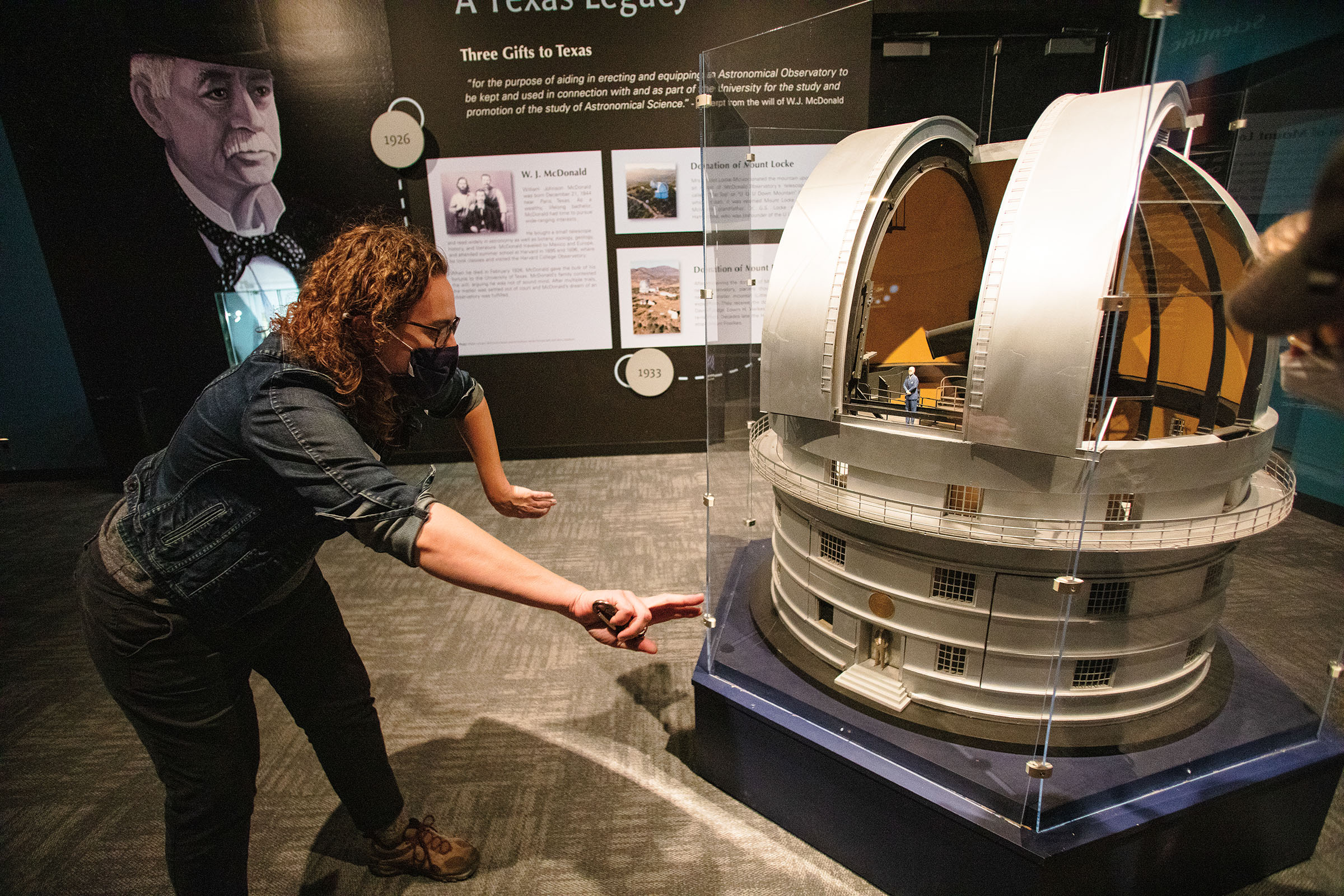
PARTY WITH THE STARS
As dusk fades and astronomers prepare to open the powerful telescopes on Mount Locke and Mount Fowlkes, visitors gather several hundred feet below at the McDonald Observatory’s Frank N. Bash Visitors Center, preparing to do their own sky scanning.
The observatory’s popular Star Party program draws as many as 500 guests on Tuesday, Friday, and Saturday nights most weeks of the year for the chance to view celestial objects against the backdrop of some of the world’s darkest skies. (COVID-19 protocols have limited visitor capacity in recent months.)
Over two hours, guests learn about the night sky from astronomy experts and get the opportunity to look at constellations and galaxies through telescopes set up on the grounds outside of the visitors center.
“The staff shares a common love of astronomy,” says Stephen Hummel, the observatory’s dark skies specialist and a telescope operator during the Star Party I attend.
The evening begins with a presentation in the amphitheater, orienting the crowd to the arc of the planets, the Milky Way, and various constellations visible on the night of their visit. Then, guests make their way to the viewing telescopes.
During my visit, Saul Rivera, an observatory public affairs specialist, stands on the visitors center patio in front of a large screen showing a telescopic image of a planetary nebula called the Ring Nebula (Messier 57). A planetary nebula is created when a star runs low on hydrogen, then expands and expels its outer layers, which appear like a ring. What remains is only the hot core of the star, known as a white dwarf, which cools over billions of years. Stars like our sun eventually become white dwarves, as the sun will be in 6 billion years or so, puffing up then collapsing on itself, Rivera explains. More massive stars collapse into neutron stars. Really massive stars fall into themselves and become black holes.
It’s hard to fathom—mind-boggling, even. That’s what happens when you behold more stars than you ever imagined under the vast West Texas sky.








